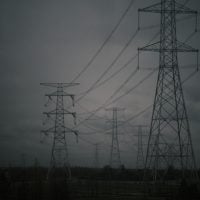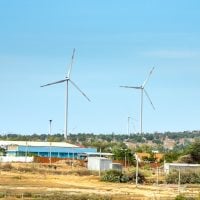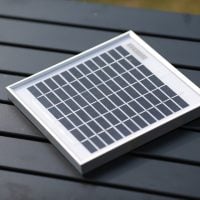In recent years, the landscape of solar grant funding has evolved significantly, driven by a growing awareness of climate change and the urgent need for sustainable energy solutions. Donors are increasingly prioritizing projects that not only provide renewable energy but also contribute to social equity and community development. This shift is evident in the rise of funding initiatives that focus on underserved communities, where access to clean energy can have transformative effects on health, education, and economic opportunities.
Understanding these trends is crucial for NGOs seeking to secure funding for solar projects. Moreover, the COVID-19 pandemic has accelerated the urgency for green energy solutions, as many donors are now looking to support initiatives that can stimulate economic recovery while addressing environmental challenges. This dual focus on sustainability and economic resilience has led to an increase in funding opportunities for innovative solar projects that demonstrate clear social benefits.
NGOs must stay attuned to these trends, as they can inform the design and implementation of projects that resonate with donor priorities. Are You Working on Solar Innovation or Clean Energy Access? Join us to receive updates.
Key Takeaways
- Donor funding for solar energy projects is on the rise, with a focus on sustainability and impact.
- Key donors in the solar energy sector include government agencies, foundations, and corporate entities.
- Donors prioritize projects that align with their sustainability goals and have a clear impact on communities.
- Leveraging donor data is crucial for designing effective grant proposals that meet donor priorities.
- Tailoring proposals to align with donor objectives and incorporating innovative solar technologies can increase the chances of securing funding.
Identifying Key Donors in the Solar Energy Sector
Identifying the right donors is a critical step in securing funding for solar energy projects. Key players in this sector include government agencies, philanthropic foundations, corporate sponsors, and international development organizations. Each of these entities has unique funding priorities and mechanisms, making it essential for NGOs to conduct thorough research to identify potential partners.
For instance, organizations like the Global Environment Facility (GEF) and the United Nations Development Programme (UNDP) often provide grants for renewable energy projects, particularly in developing countries. In addition to traditional funding sources, NGOs should also explore innovative financing mechanisms such as impact investing and crowdfunding platforms. These avenues can provide access to a broader range of donors who are interested in supporting solar initiatives with measurable social and environmental impacts.
By diversifying their funding sources, NGOs can enhance their resilience and adaptability in a rapidly changing funding landscape.
Analyzing Donor Preferences and Priorities

Once potential donors have been identified, it is essential to analyze their preferences and priorities. This involves examining their funding history, strategic goals, and specific interests within the solar energy sector. For example, some donors may prioritize projects that focus on technological innovation, while others may emphasize community engagement or capacity building.
Understanding these nuances can help NGOs tailor their proposals to align with donor expectations. Additionally, engaging with donors through informal conversations or networking events can provide valuable insights into their current priorities. Many donors appreciate when NGOs take the initiative to understand their mission and values, as this demonstrates a commitment to building a meaningful partnership.
By fostering open communication and actively seeking feedback, NGOs can refine their proposals to better meet donor needs.
Leveraging Donor Data to Inform Grant Proposal Design
Data plays a pivotal role in shaping effective grant proposals. By leveraging donor data—such as past funding amounts, project types, and geographical focus—NGOs can craft proposals that resonate with potential funders. For instance, if a donor has previously funded solar projects in rural areas, an NGO might emphasize its own initiatives aimed at increasing access to clean energy in similar communities.
Furthermore, utilizing data analytics tools can help NGOs identify trends and patterns in donor behavior. This information can be invaluable when designing proposals that not only meet donor expectations but also stand out in a competitive funding environment. By presenting compelling data that supports the project’s feasibility and impact, NGOs can enhance their chances of securing funding.
Tailoring Proposals to Align with Donor Objectives
Tailoring grant proposals to align with donor objectives is essential for success. This means going beyond generic templates and crafting narratives that speak directly to the donor’s mission and goals. For example, if a donor is focused on promoting gender equality through renewable energy access, an NGO should highlight how its solar project will empower women by providing them with training and job opportunities in the solar industry.
Additionally, incorporating specific metrics and outcomes that align with donor objectives can strengthen proposals. Donors are often interested in quantifiable results, so including clear indicators of success—such as the number of households served or reductions in carbon emissions—can make a proposal more compelling. By demonstrating a clear alignment between project goals and donor priorities, NGOs can significantly increase their chances of securing funding.
Incorporating Innovative Solar Technologies in Grant Proposals

Innovation is at the heart of many successful solar projects, and incorporating cutting-edge technologies into grant proposals can set an NGO apart from its competitors. For instance, proposals that include solar microgrids or energy storage solutions may attract attention from donors interested in supporting advanced technologies that enhance energy resilience. Highlighting partnerships with technology providers or research institutions can further bolster a proposal’s credibility.
Moreover, showcasing how innovative technologies can address specific challenges—such as energy access in remote areas or integration with existing infrastructure—can resonate with donors looking for impactful solutions. By positioning their projects as forward-thinking and aligned with emerging trends in solar technology, NGOs can appeal to funders who prioritize innovation as a key component of their investment strategy.
Addressing Donor Concerns and Challenges in Solar Energy Projects
Donors often have concerns about the feasibility and sustainability of solar energy projects, particularly in regions with limited infrastructure or regulatory support. Addressing these concerns proactively in grant proposals can build trust and confidence among potential funders. For example, NGOs should provide detailed plans for project implementation, including risk assessments and mitigation strategies that demonstrate an understanding of local challenges.
Additionally, highlighting past successes and lessons learned from previous projects can reassure donors about the NGO’s capacity to deliver results. Sharing testimonials from beneficiaries or case studies that illustrate the project’s impact can further strengthen the proposal by providing tangible evidence of success. By acknowledging potential challenges and presenting well-thought-out solutions, NGOs can position themselves as credible partners in the eyes of donors.
Demonstrating Impact and Sustainability in Grant Proposals
Demonstrating impact is crucial for securing funding for solar projects. Donors want to see evidence that their investment will lead to meaningful change within communities. NGOs should include clear metrics for measuring success—such as increased access to electricity or improved health outcomes—as well as plans for ongoing monitoring and evaluation.
This not only shows accountability but also helps build a case for long-term sustainability. Sustainability is another key consideration for donors. Proposals should outline how the project will continue to deliver benefits beyond the initial funding period.
This could involve strategies for community ownership of solar systems or partnerships with local organizations that ensure ongoing maintenance and support. By emphasizing both immediate impact and long-term sustainability, NGOs can create compelling narratives that resonate with funders.
Building Partnerships and Collaborations to Strengthen Grant Proposals
Collaborations can significantly enhance the strength of grant proposals by bringing together diverse expertise and resources. NGOs should actively seek partnerships with other organizations, government agencies, or private sector entities that share similar goals in the solar energy sector. These collaborations can provide additional credibility to proposals and demonstrate a commitment to collective impact.
For example, partnering with local governments can help NGOs navigate regulatory challenges while also ensuring alignment with community needs. Similarly, collaborating with academic institutions can provide access to research expertise that strengthens project design and evaluation methods. By showcasing these partnerships in grant proposals, NGOs can illustrate a comprehensive approach that enhances their chances of securing funding.
Adapting to Shifting Donor Priorities and Trends
The landscape of donor priorities is constantly evolving, influenced by global events, policy changes, and emerging trends in renewable energy. NGOs must remain agile and adaptable to these shifts to stay relevant in the funding arena. Regularly reviewing donor communications, attending industry conferences, and engaging with thought leaders can help organizations stay informed about changing priorities.
Additionally, being open to feedback from donors can provide valuable insights into how proposals can be adjusted to better align with current trends. For instance, if donors are increasingly focused on climate resilience due to extreme weather events, NGOs may need to incorporate elements of climate adaptation into their solar projects. By proactively adapting to shifting priorities, NGOs can position themselves as responsive partners committed to addressing pressing global challenges.
Maximizing Funding Opportunities through Strategic Grant Proposal Design
Strategic grant proposal design is essential for maximizing funding opportunities in the competitive landscape of solar energy financing. This involves not only crafting compelling narratives but also ensuring that proposals are well-structured and easy to navigate. Clear organization, concise language, and visually appealing formats can enhance readability and engagement.
Moreover, NGOs should consider developing a portfolio of proposals that cater to different donor interests while maintaining a cohesive overarching strategy. This allows organizations to respond quickly to various funding opportunities without compromising on quality or alignment with their mission. By employing strategic design principles and maintaining flexibility in proposal development, NGOs can significantly increase their chances of securing vital funding for solar initiatives.
In conclusion, understanding donor trends, identifying key players, analyzing preferences, leveraging data, tailoring proposals, incorporating innovation, addressing concerns, demonstrating impact, building partnerships, adapting to changes, and maximizing opportunities are all critical components of successful grant proposal design in the solar energy sector. By implementing these strategies thoughtfully and proactively, NGOs can enhance their ability to secure funding for transformative solar projects that contribute to a sustainable future for all.









































